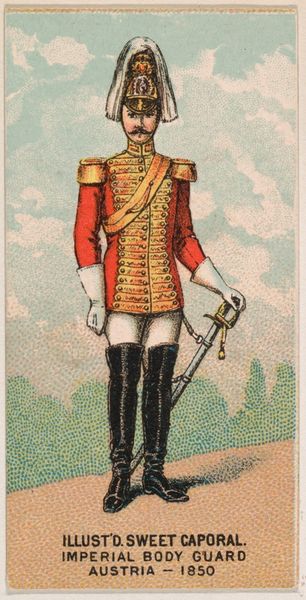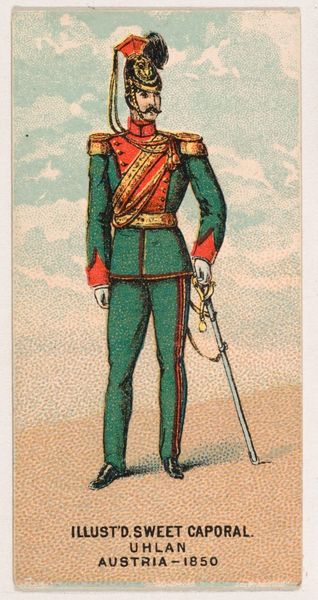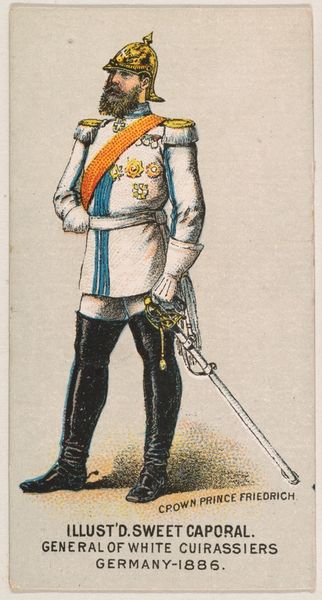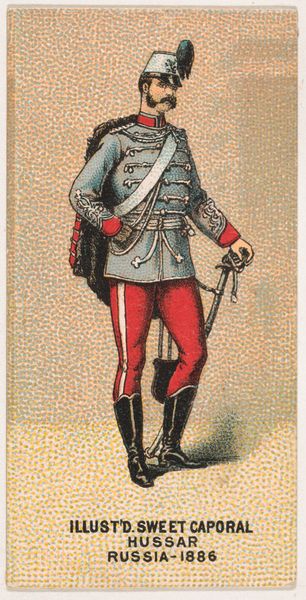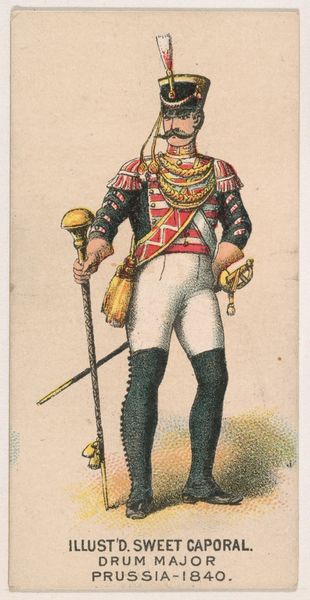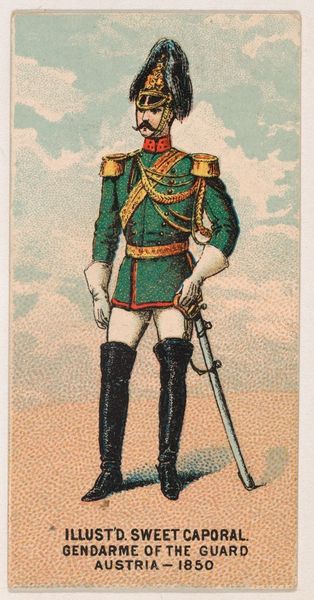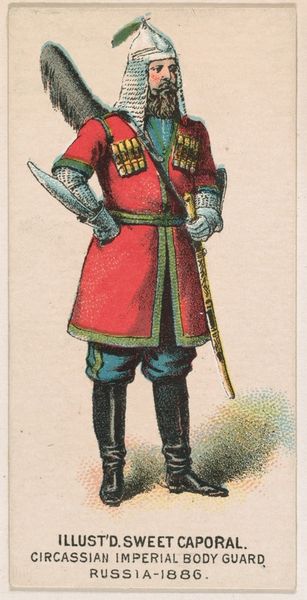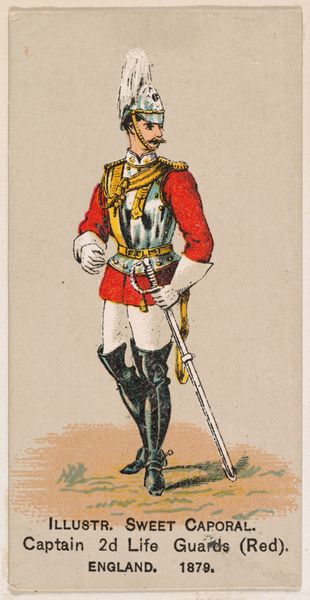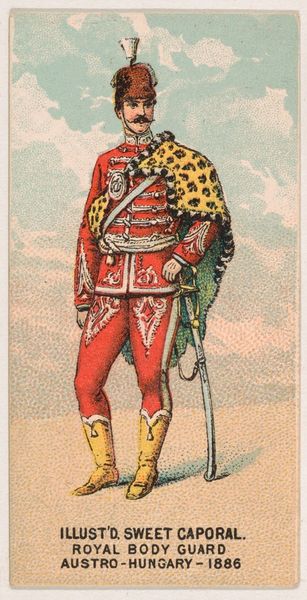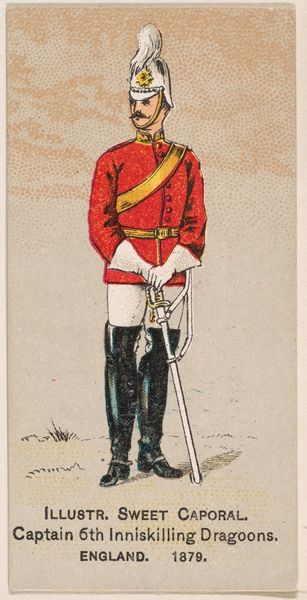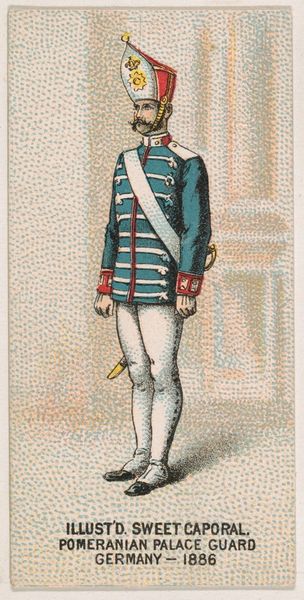
Hussar of the Guard, Russia, 1886, from the Military Series (N224) issued by Kinney Tobacco Company to promote Sweet Caporal Cigarettes 1888
0:00
0:00
drawing, coloured-pencil, print
#
portrait
#
drawing
#
coloured-pencil
# print
#
impressionism
#
caricature
#
caricature
#
coloured pencil
#
watercolour illustration
#
watercolor
Dimensions: Sheet: 2 3/4 × 1 1/2 in. (7 × 3.8 cm)
Copyright: Public Domain
Curator: Oh, the sheer spectacle of it all! I must say, the image immediately suggests a world of formality and tradition. Editor: Right? It's intensely buttoned-up, visually. I mean, look at that uniform—almost comical in its rigidness, but intriguing in how it tells a story of power. Is this one of those promotional cards? Curator: Indeed. This is "Hussar of the Guard, Russia, 1886," and it hails from a series issued by the Kinney Tobacco Company around 1888 to promote Sweet Caporal Cigarettes. Editor: Ah, Sweet Caporal! Even the brand name evokes that era's obsession with rigid codes. Is this color pencil and print? The textures are so vibrant. Curator: Precisely. And I see this not merely as advertisement or caricature but as a fascinating crystallization of cultural anxieties and aspirations of its time. The hussar, his attire laden with intricate frogging, stands stiffly erect. Note how this posture broadcasts an aura of almost mythical authority, reflecting a longing for social order. Editor: I’m more stuck on how this is both grand and a bit… absurd? It's a watercolor illustration teetering on the edge of caricature. I sense a satirical bite amidst all the pomp. Like the artist is inviting us to consider the human underneath the ridiculous uniform. What did it even feel like to wear that gear? Curator: Perhaps… And yet, this tension serves a purpose: to instill a sense of awe. Consider the symbolic value invested in such finery: the vibrant colors mirroring imperial authority, the impeccable grooming indicative of military discipline. Editor: Still, those colors feel a little off to me – strangely muted despite all that supposed vibrancy. Maybe the printing techniques dulled them. Or, perhaps that was intentional. Either way, it’s less a symbol of pure, untarnished authority than a staged representation thereof. I can almost smell the powder and aging paper... It is definitely an unusual choice to market cigarettes with an illustration like this, yet somehow understandable as well, isn't it? Curator: Marketing relied on symbols of status, of course, but to your earlier point – caricature isn't about ridicule so much as about drawing attention. So a discussion emerges from the image as a result. It is, in essence, memory materialized. Editor: Materialized nostalgia. A yearning captured in colored pencil on cheap print, destined to be slipped into a cigarette pack. In an interesting sense, these were images meant to be discarded that are now on display! Food for thought about the ephemerality of art and the durability of human fascination.
Comments
No comments
Be the first to comment and join the conversation on the ultimate creative platform.
